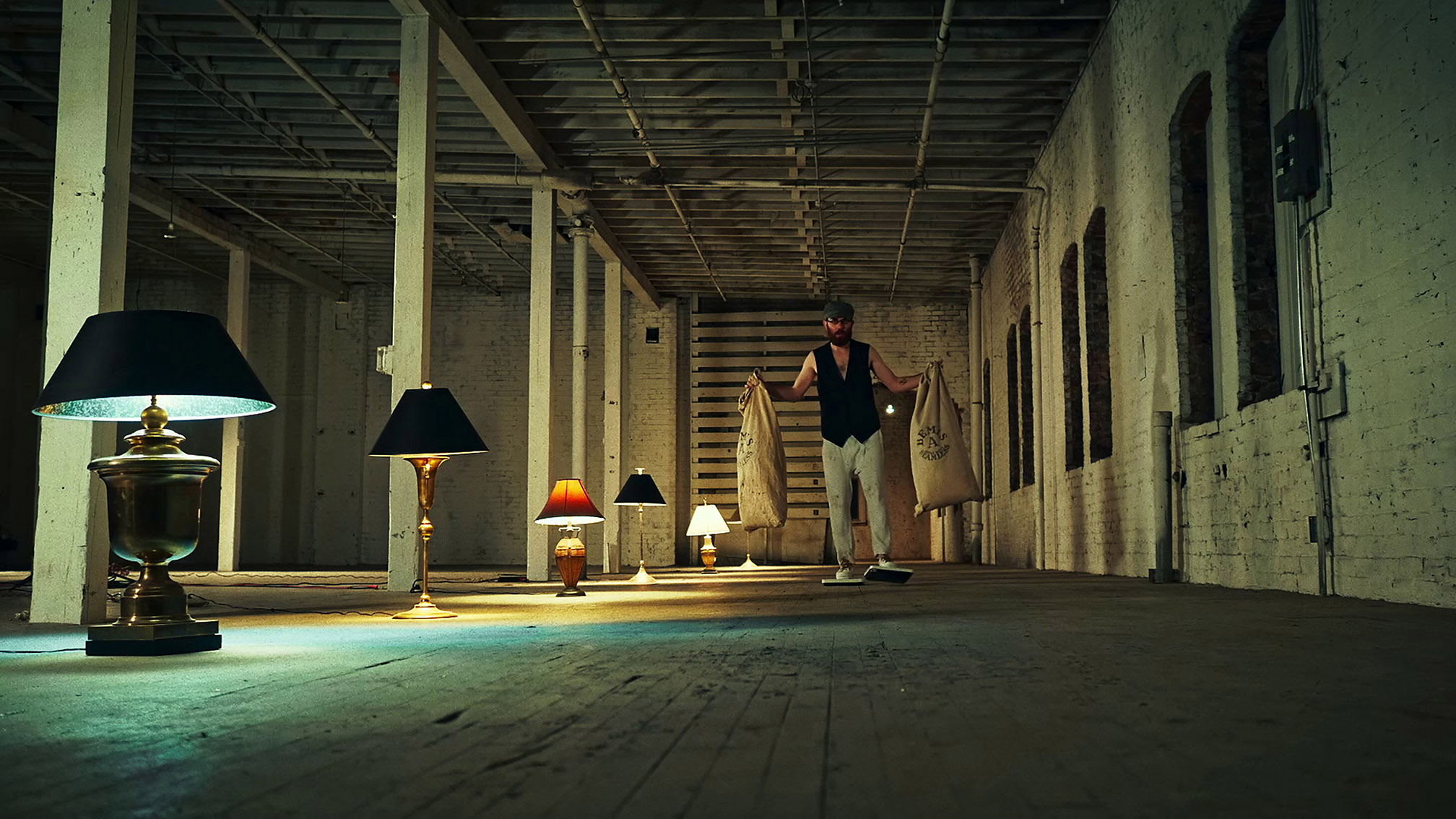
Second Hand
-
Solo show at Joslyn Art Museum, Omaha, Nebraska Der Sekundenmacher, single Video channel, 10:21 min, stereo sound. Perfect Octave, used cotton working gloves
Curator Karin Campbell
Year 2021
In the tense opening moments of Guy Goldstein’s film Der Sekundenmacher, 2020, close-up shots of gloves flash on the screen while a layered, staccato soundtrack beats like a pulse. Soon, the camera trains on a man’s face and the curious circumstances introduced at the beginning of the film come into focus. The protagonist, played by Goldstein, has been tasked with collecting the gloves while a metronome pushes him to maintain his pace. The gloves are dirty and well-worn, yet we never learn how they came to be discarded and strewn across the floor. In the wake of the last eighteen months, it is difficult to ignore the impression that we are witnessing the aftermath of something sinister. The gloves summon images of devastation and tragedy that seem to come more quickly than we can comprehend them: ruinous wildfires, earthquakes, and floods; chaotic hospital wards; desperate Afghans crowding the Kabul airport; scenes from an enduring humanitarian crisis at the United States/Mexico border. With Der Sekundenmacher, Goldstein reflects on the many catastrophes that have fundamentally shaped our current moment and contemplates the troubling theory that history repeats itself.
Goldstein filmed Der Sekundenmacher (which roughly translates to “timekeeper”) in Fall 2019 while serving as the inaugural resident in the Sound Art + Experimental Music Program at Bemis Center for Contemporary Arts. Scouring Bemis’ fourth floor—a vast materials archive available to artists-in-residence—Goldstein discovered bags filled with the featured gloves. His curiosity about what stories these objects might hold led the artist to examine Omaha’s history. During the volatile post-World War I era, Omaha and other cities in the North and Midwest saw violent labor strikes, soaring consumer prices, and high unemployment, conditions that fueled growing racial animus stemming from demographic shifts in historically white communities as Black Americans migrated in large numbers from the South. This complex landscape forms the backdrop for the film, which culminates with Goldstein’s arrival at a piano where the relentless metronome sits. We believe that this fateful meeting will liberate Goldstein’s character, yet the dream of autonomy fades as the truth of the situation becomes apparent: that the system ensnaring this laborer is far more powerful than a single ticking timepiece.